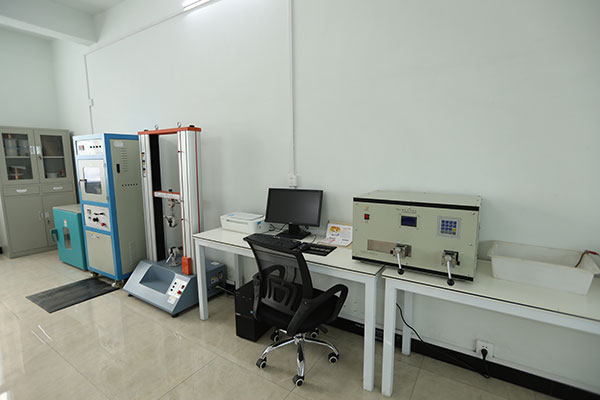Quality Control-Test equipment of magnet wire
Tests for the Conductor
| Test |
Purpose |
Common Test Equipment |
| Resistance Measurement |
To ensure the wire's cross-sectional area and conductivity are correct. High resistance indicates thinner wire or impurities, leading to overheating. |
DC Resistance Bridge or Micro-ohmmeter. For precise unit-length resistance (e.g., Ω/km). |
| Dimensional Checks |
To verify the bare conductor diameter is within specified tolerance. This is fundamental to current-carrying capacity. |
Precision Micrometer (manual) or Laser Micrometer (for continuous, high-speed online measurement). |
These tests verify the properties of the underlying copper or aluminum wire.
Tests for the Insulating Enamel Coating
This is the most critical area, as the enamel is the primary insulation. Tests can be destructive or non-destructive.
Mechanical Integrity Tests
| Test |
Purpose |
Common Test Equipment |
| Elongation & Tensile Strength |
To ensure the wire can withstand the mechanical stresses of winding without breaking. |
Universal Tensile Testing Machine. It stretches the wire until it breaks, measuring force and elongation. |
| Adherence & Flexibility |
To check if the enamel coating cracks or delaminates when the wire is stretched or bent. |
Elongation Mandrel Testers. The wire is wrapped around a mandrel of a specified diameter and checked for cracks (often with a spark tester). Springback Testers also fall into this category. |
| Scrape Resistance |
To measure the coating's ability to withstand abrasive forces, which is vital during the winding process. |
Scrape Abrasion Tester. A loaded needle or blade is scraped back and forth over the wire until the conductor is exposed. The number of cycles is the result. |
Electrical Integrity Tests
| Test |
Purpose |
Common Test Equipment |
| Dielectric Strength (Breakdown Voltage) |
To measure the insulation's ability to withstand high voltages without breaking down. |
High Voltage Breakdown Tester. Applies a continuously increasing AC or DC voltage between the conductor and a surrounding bath or electrode until breakdown occurs. |
| Continuity (Spark Testing) |
A 100% online, non-destructive test to detect pinholes, thin spots, and contaminants in the enamel coating. |
Spark Tester. The wire passes through an electrode (ring or brush) at high voltage (e.g., 1-12 kV). Any flaw causes a spark, which is detected, and the wire section is marked or rejected. |
| Pinhole Detection |
A more sensitive, offline version of spark testing, often used for fine wires. |
Pinhole Tester. The wire is passed through an electrolyte bath, and the conductor is charged. A current flow indicates a pinhole. |
Thermal & Chemical Property Tests
| Test |
Purpose |
Common Test Equipment |
| Thermal Endurance |
To determine the wire's maximum operating temperature and service life at elevated temperatures. |
Forced Air Circulating Oven used with Twist Testers and Mandrels. Samples are aged in the oven and then tested for flexibility and dielectric strength. |
| Heat Shock |
To check for cracking of the enamel after a sudden exposure to high heat, simulating soldering or overload conditions. |
Heat Shock Oven. The wire is wrapped on a mandrel, heated for a short time, and then inspected for cracks. |
| Softening & Flow |
To determine the "melt-stick" temperature of the coating, which is critical for wind-and-bake processes. |
Heat Flow Tester. Two crossed wires are heated under a load. The temperature at which they fuse together is recorded. |
| Chemical Resistance |
To ensure the insulation is compatible with varnishes, refrigerants, and other chemicals it may encounter. |
Chemical Immersion Test Setup. Samples are immersed in specific chemicals and then tested for changes in mechanical/electrical properties. |
Entire staff particiation of inspection and online test equipment to ensure the performance of the magnet wire

